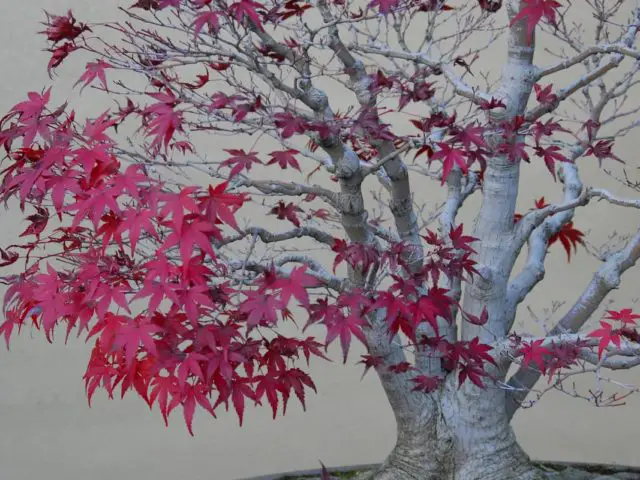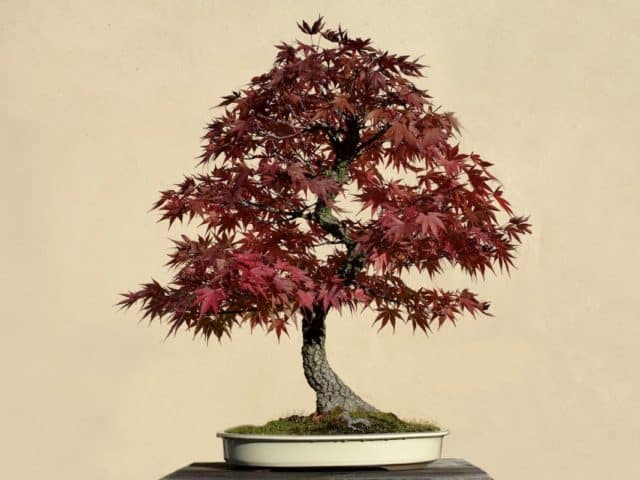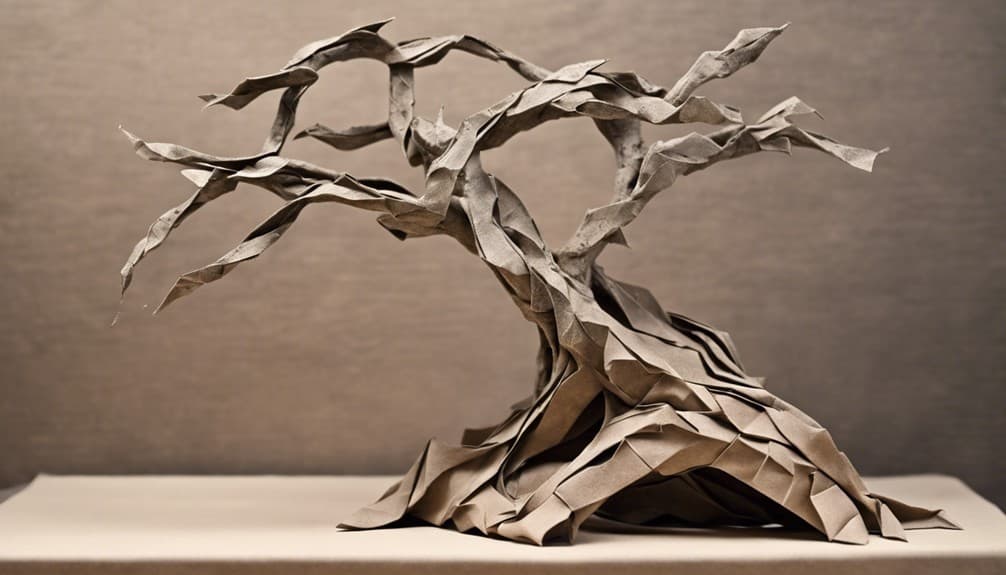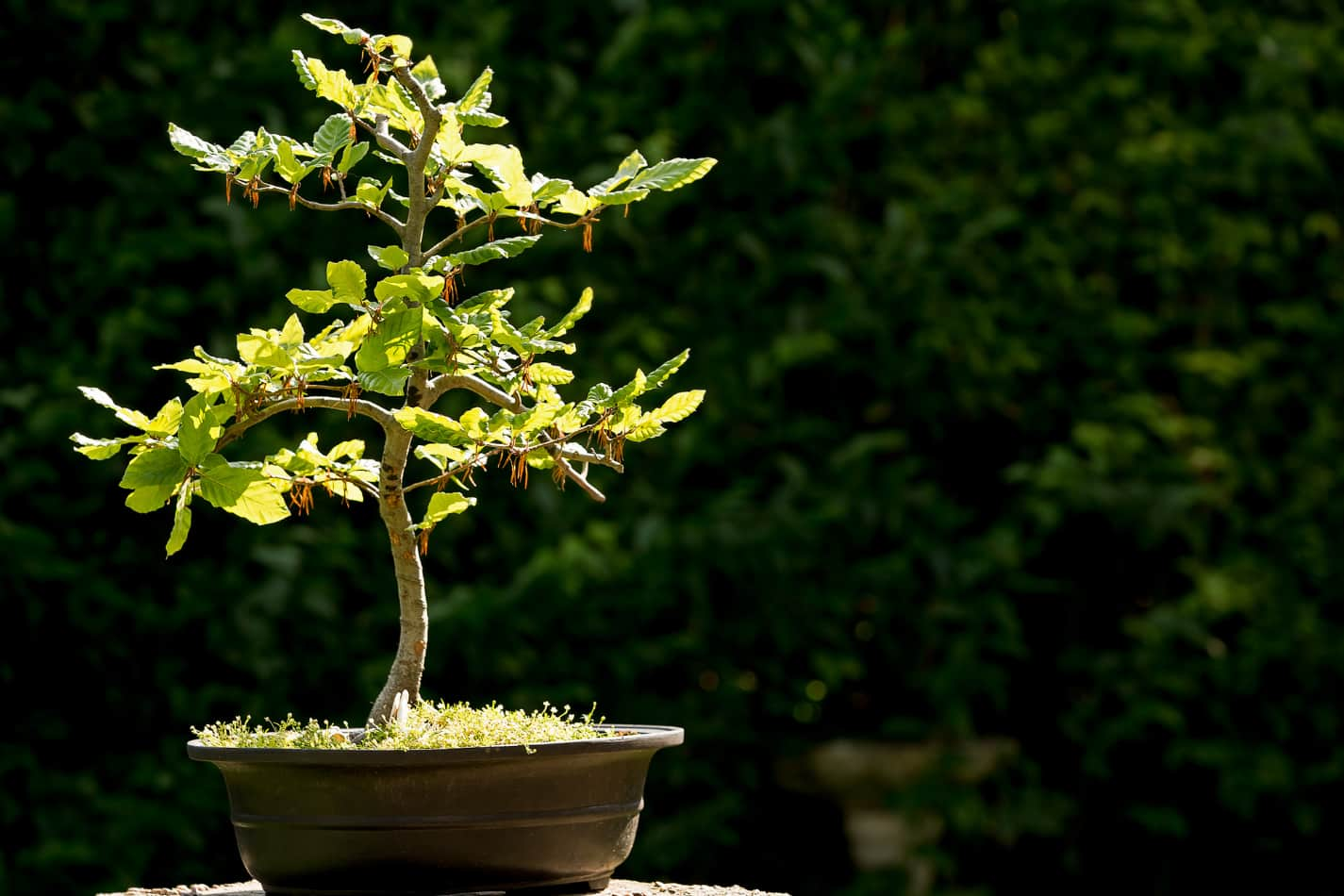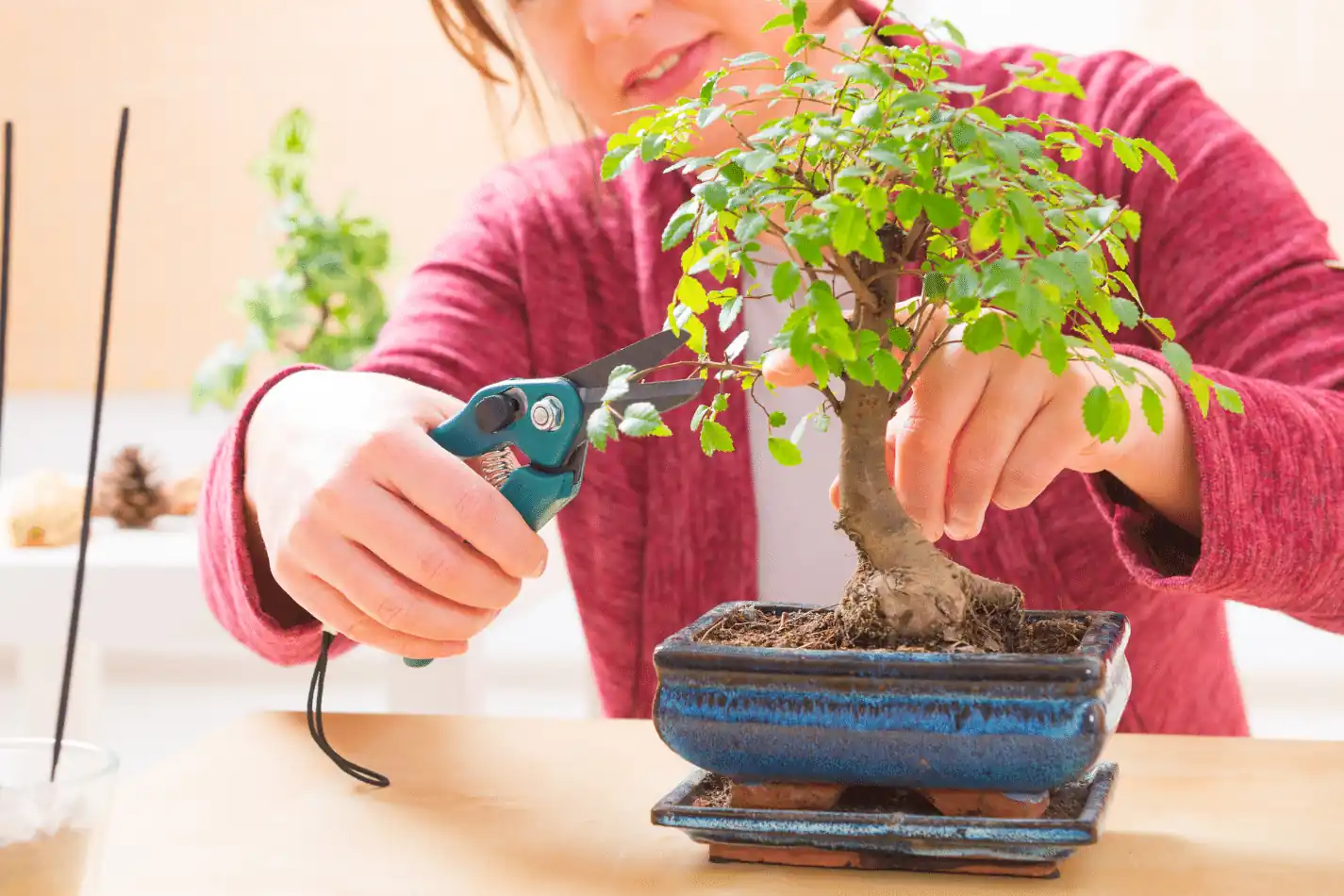The art form of growing and cultivating bonsai is ancient and has been for over 1000 years. For some people, this bonsai growing method scares them as it is a long-term project, and they believe that these unique plants are very hard to maintain.Â
It is good to grow bonsai from seeds as they grow very slowly from the start while you can keep them free from things like disease and pests. You will need to wait several months for your seeds to germinate depending on the species. Some slow-growing tree species need several seasons to break from their exterior seed coating.
Here, we will cover all the processes of growing bonsai seed and its growth cycle. Hopefully, this can help you work to build up a bonsai from the ground up and allow it to grow strong and true.
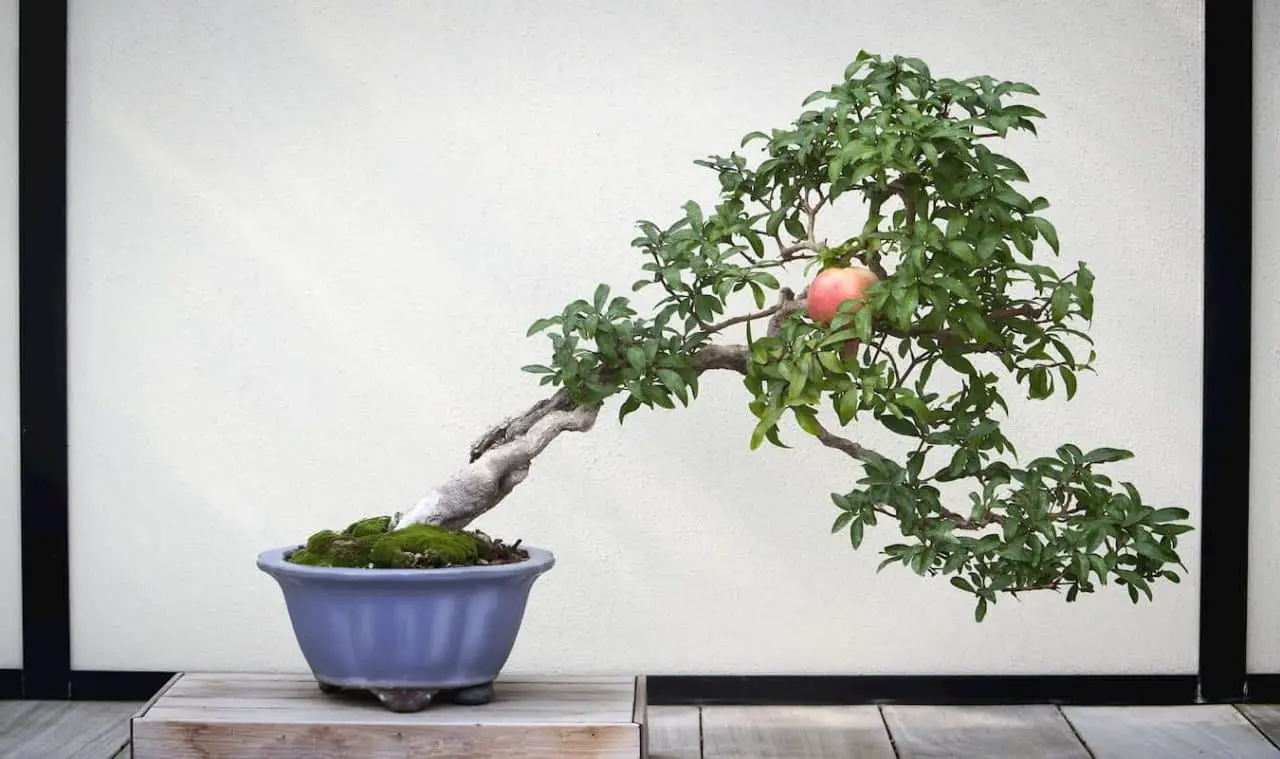
Starting Bonsai Trees from Seed
Get and Prepare Your Seeds
The first thing you are planning to grow a bonsai is that you will need seeds. Although there are no specific bonsai seeds as these are prepared by companies specializing in bonsai supplies, they have shown success and may be easier for beginners.
If you choose to buy seeds, be sure to purchase from a reputable supplier so that you won’t be disappointed. If there are no arborists’ brick-and-mortar shops available in your area, then you can search for them online.
There are many seed dealers available online, and you may get good priced high-quality seeds. Go for those sites that are reliable and trusted that come with full proof recommendations from online bonsai forums or other bonsai experts in the field.
The least expensive way to get bonsai seeds is to collect them from plants growing in your location or from mature bonsai trees already in your collection. It is ideal for getting ripe seeds that are mostly in late Summer or early Autumn.
For beginners, you can choose these seeds:
- Junipers
- Pine tree
- Cedar tree
- Japanese flowering cherry
- Wheeping Cherry Blossom
- Japanese Red Maple
- Chinese Wisteria Tree
It is recommended to get a species that is indigenous to your climate. That will ensure your bonsai is in the right condition and growth.
If your seeds are fresh and ripened within the current growing season, you can plant them right away. Otherwise, you need to process the seed known as stratification as it is sometimes necessary.

Preparation and Choosing the Best Soil
Not all seeds are almost ready for sprout when you place them into the soil. Many tree species need to be prepared carefully and stored before they are ready to germinate.
Before you purchase seed or plant it, you should go through some research to familiarize yourself with its specific needs. Most tree species like maple and pine go very nicely in well-draining and organic commercial potting soil.
You should avoid using gardening soil for your bonsai tree as the garden soil is not the correct make-up for a bonsai pot and plant. It is also typically not well sterilized which can lead to plant damage over time.
Your tree seed that will grow bonsai may not be able to live. Fill a bonsai pot with drainage holes within ½-inch from its edge.
You can put coffee filters too on top of the drainage holes if ever the soil falls down out of them. After that, water the soil thoroughly and then let it drain the remains of the water for around 30 minutes.
To make your bonsai grow and have a long healthy life you need to perfectly mix the soil that has proper nutrients. The pH level of soil should be between 6.5 to 7.5 for best bonsai health.
The most popular soil mixture ingredients are akadama, lava rock, pumice, fine gravel, and potting compost. However, these mixtures mostly depend on the region as there are variations in the soil.
Stratification and Scarification of Bonsai Seeds
Stratification mentions the procedure of making tree seeds prepared for cold temperature. That is a process accomplished in preparation for germinating a seed to create a bonsai tree.
Many tree seeds are genetically set to survive in cold winter for months, and when the spring comes, they suddenly feel the change, then they begin to germinate or sprout into seedlings.
Some of the tree seeds will never germinate until they can feel the warm and cold circulation. For that, stratification is required to prepare the seeds for germination. Cold stratification will be used when,
- You want to plant the bonsai seeds out of its season.
- The seeds are stored inside or outside of the soil over winter.
- You are using those seeds that will not sprout or germinate in your atmosphere.
In nature, a seed will fall off to the ground and stay nestled in the cold soil all over the winter. When the spring comes, the warming ground becomes moist and carries the seed out of dormancy, and softens up the shell so that the growth can start.
If you are packaged seeds or the ones that have been stored indoors for some time, stratification is a way to prepare those seeds for planting.
Using moisture and temperature, you can recreate the conditions that happen in nature to encourage sprouting.
Steps for Cold Stratification
- Soak the seed to soften up the surrounding hard shell for at least 24 hours.
- Seeds that sink bottom are the ripest, where the floating ones are the empty shells that will not sprout.
- Remove the bad seeds and put the good seeds on a damp paper towel.
- Secure the paper towel and seeds in a clear plastic bag.
- Keep the bag in the refrigerator for about a week for cold stratification.
- Take out the seeds from cold storage and plant them.
Steps for Scarification
- Soak the seeds in the water at your room temperature for 48 hours. That will soften up the exterior shell of the seed to breakthrough.
- Make sure to remove the tree seeds that are floating because they are empty shells.
- Place the seeds in a resealable bag. After that water, peat to make it moist but not too wet. Then put it in a resealable bag.
- Put them in cold storage to prepare them for the cold season. The minimum time needed is from 1 to 6 months for it.
- If you see any seeds are germinated, then you can plant them right away.
Stratification and Scarification Tree Seed Guide
| Type of Tree Seed | Stratification | Scarification | Planting |
| Japanese White Pine | warm stratification in moist peat moss within 60 days and 90 days cold stratification | warm water within 24 hours | Sow seeds in the soil 1/4 inch deep |
| Gray Bark Elm | cold stratification within 60 days | warm water within 24 hours | Sow seeds in the soil 1/4 inch deep |
| Japanese Firethorn | cold stratification within 30 days | warm water within 24 hours | Sow seeds in the soil 1/8 inch deep |
| Japanese White Birch | cold stratification within 60 days | warm water within 24 hours | Sow seeds on the soil’s surface |
| Trident Maple | cold stratification within 90 days | warm water within 24 hours | Sow seeds 1/4 inch deep |
| Japanese Maple | warm stratification within 120 days, then cold stratification for another 120 days | Hot tap water within 48 hours | Sow seeds 3/8 inch deep |
| Nomura Red Maple | warm stratification within 60 days, then cold stratification for another 60 days | Hot tap water within 48 hours | Sow seeds 1/8 inch deep |
| Japanese Larch | cold stratification within 30 days | warm water within 24 hours | Sow seeds 1/16 inch deep |
| Japanese Hornbeam | warm stratification within 60 days, then cold stratification for another 90 days | warm water within 24 hours | Sow seeds 1/8 inch deep |
| Japanese Heavenly | not needed | warm water within 24 hours | Sow seeds 1/8 inch deep |
How to Plant Bonsai Seeds?
- Select a planting container to plant the bonsai seeds.
- Some people favor a pot, where others like to use a starter or seed tray. If you choose to use a tray, your seedlings need to be moved to a deeper container when they sprout.
- Ensure the container is not much small, or it will require you to re-pot multiple times if the seedlings thrive.
- The pot should have many proper drainage holes to save the roots from rotting.
- Shelter the bottom of the container with good sand or gravel to allow for good drainage.
- Fill the container with a suitable potting bonsai or compost soil for about ¾ inch to 1 inch under the rim.
- Make sure to pick a rich nutrient soil as your seedling will require plenty of nutrition after sprout.
- Pat down the soil lightly to make sure that it is settled but not too compact.
- Utilize a chopstick or your finger to create shallow holes to place the seeds.
- Ensure you do not sow the seeds too close to one another, or they will be overcrowded when they germinate.
- Put a thin layer of bonsai soil over the seeds.
- This layer should not be more than ½ inch to 1-inch-thick, which depends on the size of the seeds you have planted.
- Sowing the seeds too deep can prevent the germination process.
- Water the seeds carefully and make sure you do not disturb the seeds.
- Some people like to use a spray bottle for this task rather than just pouring the water directly.
- Keep the container outside to let the seeds germinate naturally.
- Also, you can place it in a good ventilated location that has minimal direct sunlight.
- Keep the soil moist but not completely wet.
- Avoid keeping the soil dry out because of water shortage.
- If the pot is outside, you can expect the seeds to germinate naturally and sprout early spring.
- However, if you grow these bonsai seeds indoors, you will have to wait four weeks after planting to see sprouts.
- Start fertilizing for about 5 to 6 weeks after the sprouts show up; you can use a diluted solution to burn the young root systems.
- After the first year, you can separate the seedlings and move them to their pots.
Overall it will take about three years before your small trees are ready for training. Growing bonsai from its seeds is a very good beneficial experience if you have the time and patience.
Let the Seeds Germinate
When you gather up the seeds, you have to take care of them so that they can germinate or sprout. If you live in a non-tropical location and have defined seasons, seeds mostly fall in the cooler autumn months.
Then these seeds stay dormant until spring. You have to mimic colder weather for a few months before slowly warming them up for spring weather.
If you live in a location with defined seasons, you can bury seeds in a container or pot of soil mixture and place them outside throughout the winter and spring.
If not, place your seeds in a bag with a bit of damp growth media like coconut coir or vermiculite. Place them in the refrigerator until spring and remove that when you see them germinate.
Germinating bonsai seeds are essential; the procedures for that are stratification and scarification. These methods are helpful to simulate the natural environment and climatic conditions required to germinate seeds.
Once you have seen the seeds sprout, it’s time to take good care of them to create beautiful bonsai.
Post-Germination Care
The amount of your time you invested in your bonsai seedling will take to appear from their tree seeds, depends on its species. While tree seeds will sprout in only a few weeks, other seeds will take months or seasons.
But when the bonsai seedlings successfully come out from their seeds and grow real leaves. Once the bonsai trees start to grow in the seedling trays, you can put them in a larger pot.
Place a pencil under the roots of your seedlings, shove them up from the soil. Avoid pulling them with their delicate stems. When the bonsai tree seedlings are planted in a pot, you can start caring for them as you do for other bonsai trees.
Take them to the sunlight, and be sure to water them regularly. When the bonsai trees are 5 to 6 weeks, you may start a fertilization regimen.
Care Tips for Bonsai
- Water and give your bonsai tree seedlings a semi-sunny condition as they are growing. When you reach this level of growth, it will be a year-long project of your bonsai tree. After 4 to 6 years, you will plant the ones which you will be able to train.
- Tropical species are meant to stay inside, but if you have selected a species that can survive in your area, you can keep it outside where it will get sunlight.
- You can water your bonsai anytime. Some experts advise not to use cold water when the soil is warm as it can harm the balance. You should always water the tree when the soil is dry.
- Many bonsai trees usually die because of under-watering, so be careful about that.
- Maintenance pruning enables the strength of the tree and encourages its growth. Areas that need pruning are branches, buds, and leaves.
- Another way to control the shape is to wire its branches.
Choose A Pot Before Growing from Seed
A large part of practicing a bonsai tree is you need to pick the right container or pot. Some people choose with their gut feeling, but this process is difficult for beginners.
So here are some basic rules you need to follow before getting a pot.
- Masculine or feminine:
- The first thing you should decide if your tree is masculine or feminine.
- Some symbols that can help you along the way is that the curves, grace, smooth bark, and sparse branches are known as feminine.
- On the other hand, masculine traits are strength, old bark, deadwood, thick trunk, and dense branches.
- Size:
- The pot should be of a similar height as the trunk is wide above the nebari.
- Oval and rectangular pots are mainly 2/3 of the height of the tree.
- Round and square pots are 1/3 the height of the tree.
- Design:
- The pot’s design should match your tree. The closer your pick, the close you will get to the final bonsai.
- Think about the structure like concave, convex, angular, round, oval, and rectangular, then determine the tree’s degree of feminine and masculine and then adjust the pot’s design.
When should you seed your bonsai?
Just like all trees, the bonsai has a good time to seed it for the best outcomes. The late winter and the Autumn period is the best time to seed your bonsai. The middle of February is an overall good time for most of the bonsai trees. And throughout the whole winter, the bonsai tree stays dormant, and it rests for the spring.
Bonsai That is Fastest to Grow
If you want to get the fastest bonsai growing species, then you can have,
- Ficus Religiosa
- Maple
- Chinese Junipers
- Japanese Black Pine
- Japanese White Pine
- Jade
But many bonsai experts say that the truth of growing a bonsai should not be a race to finish. It is an experience to enjoy every step of the way.
Indoor or Outdoor Bonsai Trees
Once you decide on a bonsai species, pick whether you want to plant bonsai to live indoors or outdoors. You do not want to upset it by moving it between two different areas.
The indoor area is mostly drier and has less light, so your indoor bonsai tree requires less moisture and sunlight to grow. In most houses, the only site where a bonsai will go well is right at a South facing window as lots of light is essential for the tree’s health.
When it is kept a few feet away from the window, the light will drop down, and it will slow down the growth, or this may kill your bonsai. Indoor bonsai are mostly (sub)tropical tree species, which means they require high humidity.
Place bonsai on a humidity tray and somewhere with a constant temperature throughout the day. Depending on where you live, most bonsai trees are required to be put outside year-round. The annual cycle is essential for the health of most bonsai.
As it is an important rule, place the bonsai outdoor at a bright spot with lots of light. If your summer weather is extremely hot, then morning and afternoon light will be ideal for your bonsai. In winter, you need proper care for your bonsai.
I have gathered several varieties of indoor and outdoor bonsai trees that are ideal for their growth.
Indoor Bonsai Trees –
- Camellia
- Kingsville Ficus
- Gardenia
- Hawaiian Umbrella
- Boxwood
- Serissa.
Outdoor Bonsai Trees –
- Birch
- Cedar
- Cypress
- Elm
- Ginkgo
- Juniper
- Larch
- Beech
- Maple
Shaping and styling techniques
The shaping and styling techniques of bonsai involve a lot of ways that are unique to one another. Some of the ways of shaping and styling bonsai trees are,
- Trimming the leaves and removal of some specific leaves or needles from its trunk and branches.
- Pruning the branches, trunk, and roots of the bonsai tree.
- Wiring the trunks and branches to allow the bonsai designer to make great detailed leaf and branch placements.
- Clamp the branches and trunks using mechanical devices.
- The grafting method to grow a new branch or root into an area under the tree’s bark.
- Give a short-term dwarfing of foliage that only works for certain deciduous species.
- Jin and Shari can help to stimulate the maturity and age of a bonsai.
How Growing Conditions Affect the Time Taken to Grow a Bonsai Tree?
The perfect growing conditions are not just to ensure the bonsai tree is healthy, but it also lowers the needed years to grow a bonsai tree. Giving the best possible growing conditions and taking care is very important.
It does not matter if you want the tree to grow faster or not; you have to look after the bonsai tree. Here are some things which affect the growth of a bonsai tree,
- Sunlight:
- Just like any other tree, a bonsai tree requires sunlight for its survival and growth. The right light strength is all you need for the excellent development of a tree.
- Water:
- Water is also an element that has a more prominent role in the growth of a tree. The under-watering and over-watering methods are incredibly general in new bonsai enthusiasts.
- It can considerably slow down a bonsai’s development, or even more seriously, it can kill the tree.
- Nutrients:
- A tree’s accessibility to good quality nutrients can lower the time it needs to grow; it’s the same for bonsai trees.
- It is only achievable via fertilizing the seeds frequently in the growing seasons using a well-balanced bonsai feed.
- We advise you to use lower nitrogen feed for the bonsai in winter.
- Disease/Pruning Control:
- This is one of the fundamental reasons why the bonsai tree grows faster than a regular full-sized tree.
- Bonsai are checked continuously for diseases, root rot, and pests; additionally, they are pruned for healthy growth.
- The Right Environment:
- A bad environment will noticeably harm the growth of a bonsai tree. It will not only slow the development of the tree; it can even kill the whole tree just because of a wrong environment.
- Find the best environment according to your bonsai tree’s species. That perfect environment will pull out the potential growth of the tree in no time.
Signs that your bonsai is dying and how to help it
Bonsai trees are similar to any other trees, and they will show you signs if they have any kind of distress. Avoiding these signs can save your bonsai tree’s lives.
Finding out those signs can prevent any hassle, which may occur if they are neglected. Here are some of the usual signs of your bonsai tree to watch out for as they may be signs of impending death.
Discoloration
Discoloration might not seem like a big deal because it usually changes the leaf’s color and occurs in a small tree section. It also can happen because of nature, as if the leaves get a lot of sunlight to burn them.
Brittleness of branches and leaves
The brittleness of branches and leaves is also a natural cycle and can happen to any tree. You can gain extra knowledge of what to expect from brittleness by researching enough and preventing it. It happens if the branches do not have enough sunlight or water.
Patterns on leaves or bark
The odd patterns on the leaves or barks are a sign of disease or a work of bugs and pests. It is essential to find out why the pattern is soon enough to cure it in time. Many online bonsai communities can help you identify the patterns.
Leaves dropping off
It’s one of the ambiguous signs out there for the bonsai tree. It is a very bad situation than discoloration and brittleness for it. It can eventually cause the whole tree to lose its leaves. If your bonsai is losing more leaves than the season’s standards, then you have to be aware of it.
Root abnormalities
The roots of bonsai trees are also very important, just like any other tree. But if the root of a bonsai tree is showing abnormalities or any signs of troubles, you have to be aware of it.
The roots of the bonsai tree need to be examined at least once a year. If the tree’s roots are overgrown and tangled by a lot, they have outgrown the planting pot.
The solution to this is changing the soil to allow the roots to be disentangled and aerated correctly.
Final Thoughts on Growing Bonsai From Seed
The bonsai tree is an art and labor of love that needs patience and dedication from your part. However, I have explained the details you need to know about growing a beautiful bonsai as a beginner.
If you fail on the first attempt, don’t lose hope; try again. As it needs some time to learn about it and the beautiful result of your bonsai care is well worth it.
If you are just learning about bonsai trees and looking to purchase high quality trees that will likely live longer than you then I would highly suggest checking out Bonsai Boy Trees as they are a long lasting New York business that provides trees for all price ranges!


